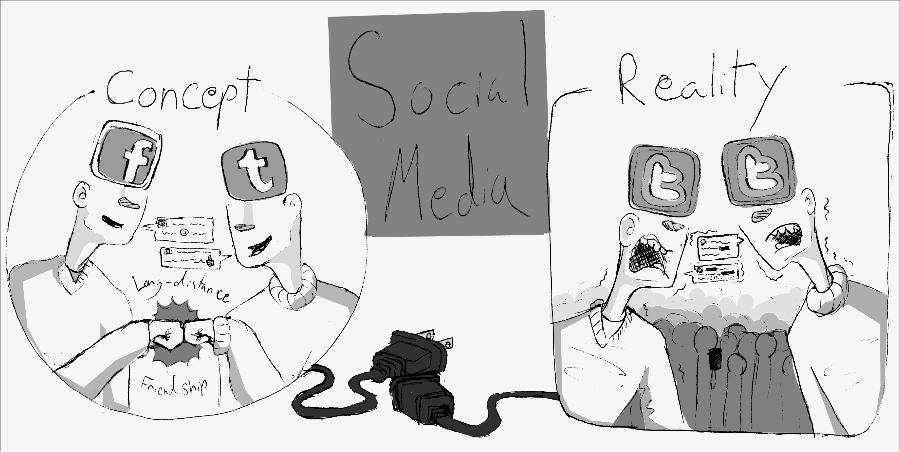Social Media Editorial
January 21, 2015
As teenagers, we often have the desire to keep in touch with our friends and classmates at all hours of the day. In the past few years, new social media sites have appeared—namely Instagram and Snapchat—that attract the teenage audience. These social networks, together with more established social media sites like Facebook and Twitter, now seem to be the preferred form of communication among teenagers, often surpassing talking itself.
When discussing the positives and negatives of social networking, the editorial board came to a unanimous opinion: social media is more beneficial than harmful, but has the potential for abuse.
For aspiring artists, photographers, filmmakers and creative types, for example, social media is a powerful tool that can be used to share work on a larger and more authentic scale. These forms of social media often provide inspiration and opportunities for networking and promoting the user’s artwork. This has been the case for three of our editorial board members who use YouTube, Instagram and Flickr to display their work.
Social media is also a valuable communications tool. It allows us to continue dialogue with our friends in a new multimedia platform. Friends you met at camp who live in California are now a click away, and communicating with relatives who live overseas has never been so easy. These social networking sites allow us to keep contact with them and get a glimpse into their lives without the high cost of international phone calls or slow, undependable snail mail.
The nature of social media facilitates the spread of opinions. For teenagers who feel their voices are not heard, social networks provide them the necessary outlet and allow teens to find a community of like-minded users and support that not everyone receives in real life.
So, what do we mean by abuse, exactly? We pinpointed four forms of social networking abuse: too much time spent on social media causes students to procrastinate on more important things that need to be done; an increased sharing of personal information through these sites; cyberbullying and offensive posts, including the spread of rumors; and a preference to have social interactions through this medium rather than face-to-face, which negatively impacts social skills.
There is always something new to look at on our phones: The newest post, latest tweet, or most recent ‘snap,’ a photo sent through the messaging app Snapchat. The seconds spent on our phones turn into minutes, the minutes accumulating into hours, as we fool ourselves into thinking we will have time later in the day to start our homework.
It is so easy to use social media to connect with school friends that we forget, or don’t realize, that third parties have access to all we post. According to Instagram’s terms and conditions, when a user creates an Instagram account he or she “hereby grant to Instagram a non-exclusive, fully paid and royalty-free, transferable, sub-licensable, worldwide license to use the Content that you post on or through the Service.” In other words, Instagram can legally use what users post on social media in advertisements or in any other way the company finds suitable.
Social media as a place to give opinions is great, but when these opinions become harmful or target a specific person, we are abusing this method of communication. Cyberbullying, sadly, has become increasingly common.
As teenagers, we’ve noticed how others, and sometimes ourselves, use social media as a crutch. Instead of interacting with our peers and listening to the conversations going on around us, we are glued to our phones, scrolling through our feeds. Multiple editorial board members have seen groups of friends at lunch sitting together—but all on their individual phones, not speaking a word to each other in real life. Let’s put the phones down and enjoy the present.
We the editorial board believe that social media will continue to be present in daily life. Therefore, the answer is not for students to be unconnected completely from these social networking sites as we believe some interaction through social media is necessary. What is needed is an increased awareness among teens on the effects of social media in our lives, the risks of overuse and the need to educate ourselves on privacy issues. We believe that our school’s health education course should address these topics that are so relevant to teenagers today.








Anonymous • May 22, 2016 at 1:43 pm
Social networking sites have created an environment that make it easier for people to find friends and build successful real life relationships. All of the various sites and apps give you a larger group of people to select from, and they also can provide a less stressful and embarrassing way to get to know someone before actually meeting them face to face. Rather than hamper your ability to create real life relationships, social networking sites have actually helped. In the end, it is your decision to make the choice to put yourself out there on social networking sites and find that real life relationship.